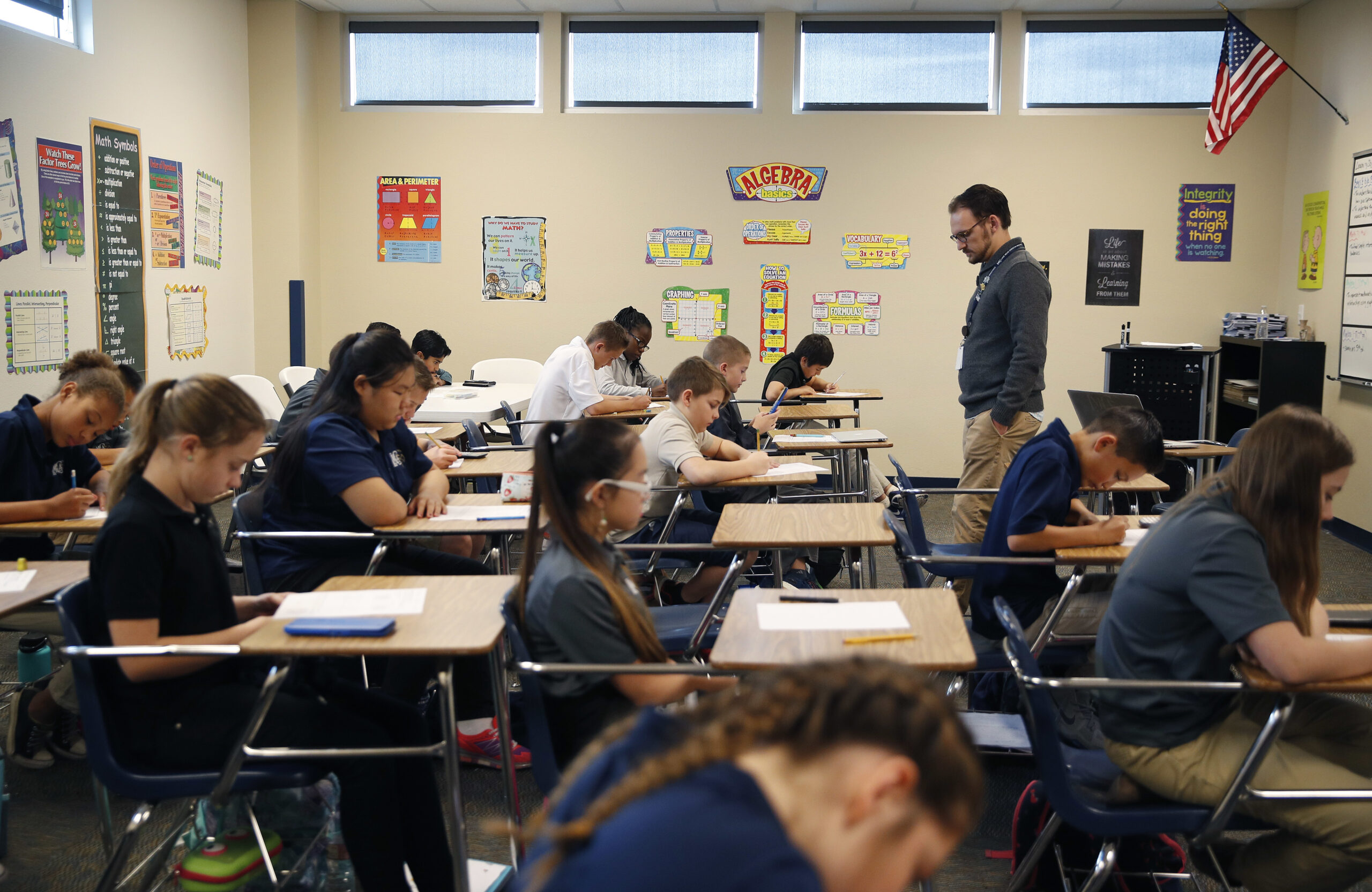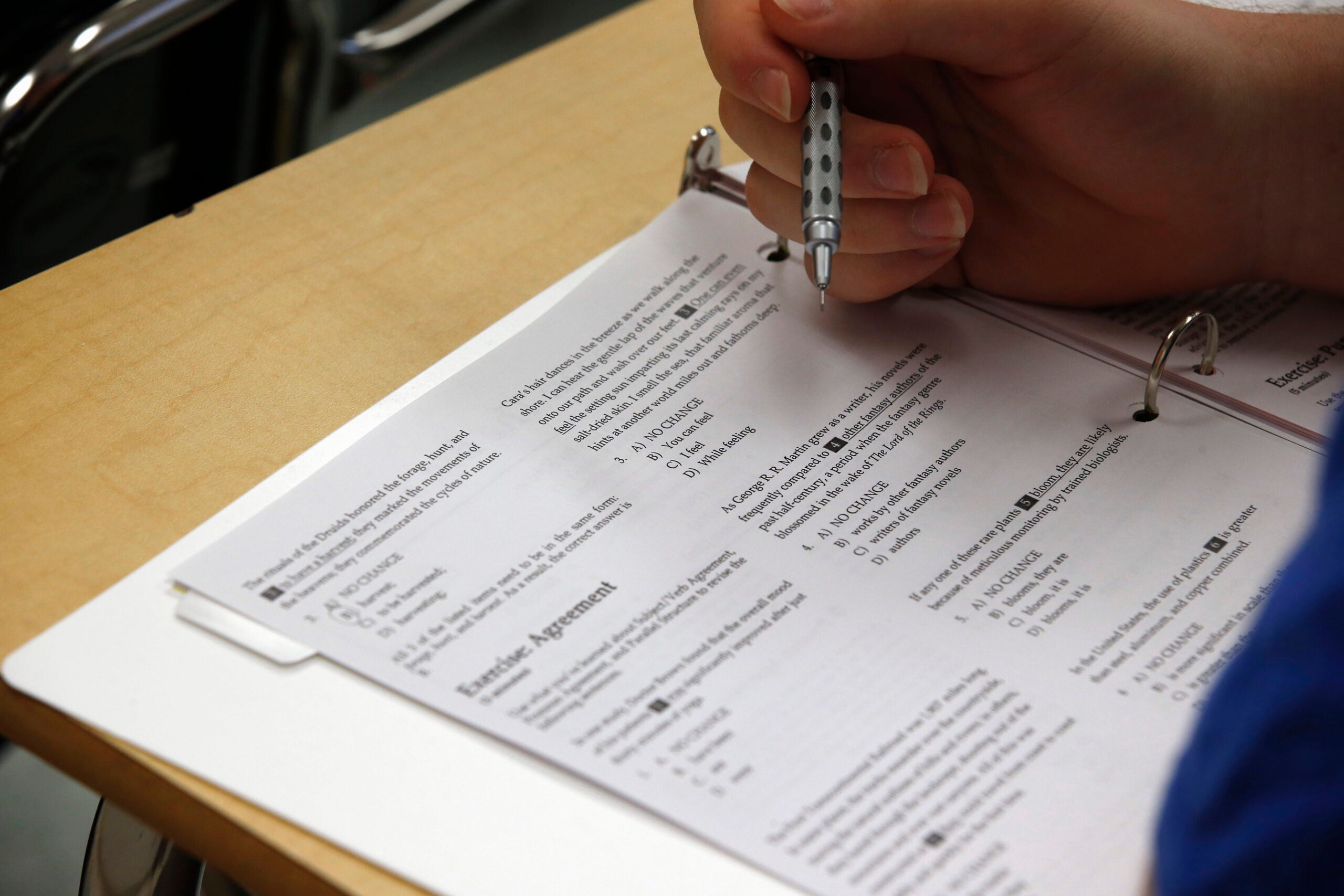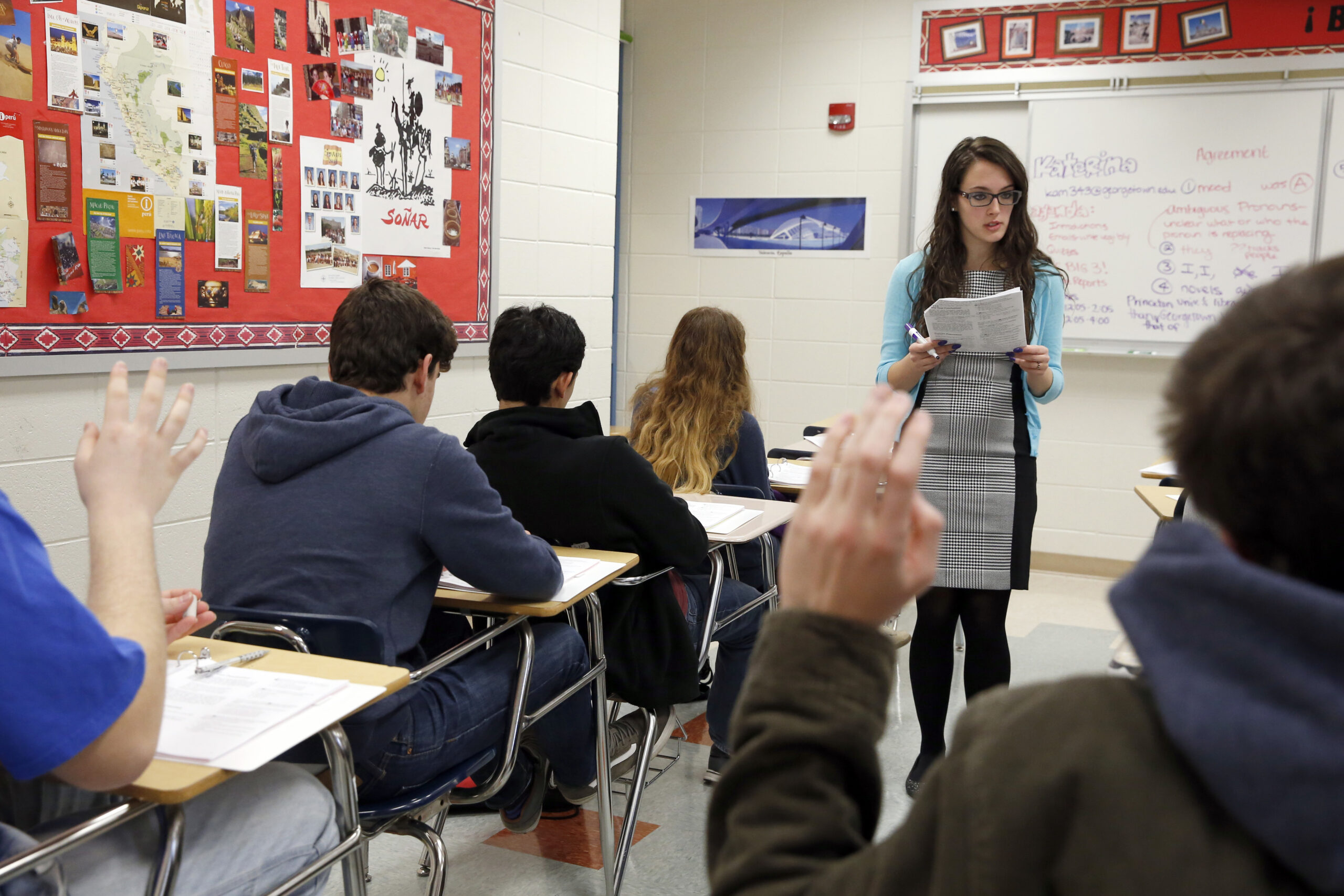Wisconsin’s measuring stick for how students are performing in school changed when the state Department of Public Instruction rolled out new testing standards in June.
The categories were renamed and the benchmarks moved. And while the initial changes didn’t get much attention, the new standards have become a key focus of the upcoming state superintendent race.
The changes have also gotten blowback from both sides of the political aisle.
Stay informed on the latest news
Sign up for WPR’s email newsletter.
Republicans introduced a proposal to reverse the standards, and Gov. Tony Evers has questioned how DPI went about making the changes.
But behind all of the political rhetoric are the students, parents and teachers who actually use the tests.
One Milwaukee parent, who teaches high school and has a daughter in middle school, said she can see both sides of the issue.
She said the new, gentler terms to describe student progress are an improvement — and more closely represent how she thinks about her own students.
Words like “below basic” have been replaced with “developing.”
The teacher, who did not want to give her name for fear of retaliation, said tests like the Forward Exam — given to students in grades three through eight — show a child’s growth over time. It also allows teachers to compare their school to others.
But the new testing standards make year-to-year comparisons impossible because the data no longer matches.
“That data over time allows educators in schools to know if their students are career and college ready,” she said. “If you can’t look back, how can you move forward?”
WPR set out to answer questions about state testing. Here’s what we found.

What are standardized tests for?
Standardized tests are meant to give a snapshot of how students are doing in school.
The National Assessment of Educational Progress, or NAEP, administers an annual nationwide test for fourth, eighth and twelfth graders. The organization says the report cards provide “a window into the state of our K-12 education system.”
Standardized tests are used to compare student performance, measure accountability and help teachers identify learning gaps.
Tests like the ACT and SAT are also used for college and graduate school applications.
What has changed?
The Forward Exam assesses Wisconsin students’ knowledge in English language arts and mathematics from third through eighth grades.
The test was updated in June 2024 — with feedback from about 100 educators — to include a distinct reading assessment and a corresponding student score. It also lowered the threshold for what is proficient on the state tests.
DPI said the updates were updated through a routine process that was also done in 2018-19 and in 2021-22. The change will help teachers improve educational outcomes and reading comprehension, according to DPI.
The math portion of the Forward Exam also shifted its focus with test questions more directed to a students’ grade level.
Previously, benchmarks had been tied to a different test: the NAEP.
NAEP tests a grade level above where children are. DPI argues the change in how Forward Tests are measured will give students, teachers and parents a better understanding of where children are academically.
If the Forward Exam gives parents a better understanding of progress, what’s the issue?
Scores for English language arts and mathematics for 2023-24 can no longer be directly compared to prior years.
Jason Stein, who heads the nonpartisan Wisconsin Policy Forum, recently testified during a legislative committee hearing that having consistent data is important for parents and taxpayers.
The Policy Forum uses Forward Exam data to compare school districts over time and to each other.
“Our goal is that a school board member in a Northwoods district, or a single mother in Milwaukee, or a stay-at-home dad in La Crosse can take this data and they can understand what it means,” Stein said. “And they can use it to make better decisions — whether that’s where their child goes to school, how they interact with their school district or what policies their school district takes on.”
State Sen. John Jagler, R-Watertown, is one of the authors of the bill to undo DPI’s changes. He testified that consistency is especially important after student performance dropped significantly during the pandemic.
“As we move out of COVID, it is more important than ever that we’re able to see how our educational system is advancing or not advancing,” Jagler said.
How are Wisconsin’s students doing?
That’s unclear.
State test scores released by DPI in October show almost half of students are testing at grade level in reading and math.
That’s a significant jump from last year, when less than 40 percent of students were considered proficient in those subjects.
But again, the scores can’t be compared to results from previous years. New scores from this year, will be comparable to future tests.
Under the new scoring system, 48 percent of Wisconsin public school students met grade level standards in English language arts and 49.4 percent did so in math. Meanwhile, 30.9 percent of students attending private schools with public vouchers met grade level standards in English language arts and 28.3 percent did the same in math.
Meanwhile, NAEP scores were just released. That’s the “harder” national test given to fourth and eighth graders.
Wisconsin didn’t score as well.
Thirty-one percent of fourth graders performed at or above the NAEP proficient levels in reading, down from 33 percent in 2022, while 31 percent of eighth graders were at or above proficient levels compared to 32 percent in 2022.
Have other states changed how they measure their students?
Wisconsin’s new testing standards that boost proficiency rates are similar to changes made in Oklahoma and Alaska, according to The 74.
New York lowered passing scores in reading and math last year, while Illinois and Colorado are considering such revisions.

What are the candidates for state superintendent saying?
Testing standards have emerged as a top issue in the state superintendent race.
Incumbent DPI Secretary Jill Underly will face Sauk Prairie Superintendent Jeff Wright and education consultant Brittany Kinser in a primary election on Feb. 18.
The top two vote getters will move onto the April 1 election.
During an interview with WPR, Kinser said after finding out about the testing changes, she went for a run and decided to put her name in for the state’s top education post.
“My No. 1 thing will be to restore our high standards when I get elected,” Kinser said. “I will restore that, because we need to know how we’re doing and if kids aren’t learning, we have got to make sure we are providing them with the tutoring and the curriculum and the teachers with the support.”
In his campaign materials, Wright says the new state cutoff scores imposed by DPI took many educators by surprise and came at the worst possible time as districts are still assessing student progress post-COVID.
“Tests must provide actionable data that helps schools improve and help students and their families track progress,” Wright said.
Underly has defended the decision to change benchmarks. She has repeatedly said standards were not lowered, but now illustrate what children know.
Wisconsin Public Radio, © Copyright 2025, Board of Regents of the University of Wisconsin System and Wisconsin Educational Communications Board.




